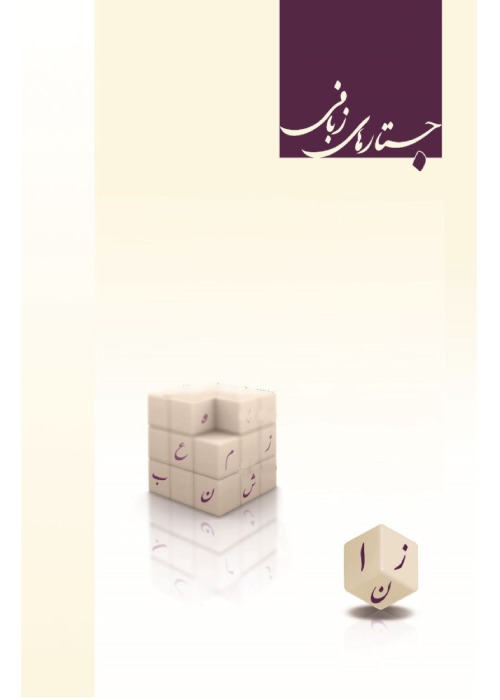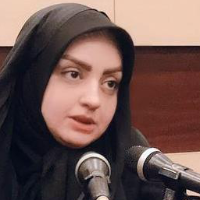Narrative Analysis of Two Short Stories: To Whom I Say Hello by Simin Daneshvar and Zane Ziadi by Jalal-e- Al Ahmad
Author(s):
Article Type:
Research/Original Article (دارای رتبه معتبر)
Abstract:
The concept of narration, with a background as long as the humans history, has already provided a suitable area for critics analysis and assumptions about tales, stories and other types and forms of narration in the form of Narrative Science.
In this paper we are going to analyze and compare the application of narrative view and focus in two short stories of To Whom I Say Hell? by Simin Daneshvar and Zane-Ziadi by Jalal Al Ahmad via investigating the structure of the language at the first place on the basis of linguistic features and narrative viewpoints.
Accordingly, the current study tries to answer the following questions:How the applied language in the above mentioned works can be affective in forming the role of the narrator and finally, the focus?
Have these traits and features been leading us to the same type of narrator and focus features in order to clarify the typology of the story?
Have the narrative discourse and prevailing viewpoint and the resulting context in both stories led us to the same hidden author?
But in this respect, linguistic and narrative mechanisms of both stories alongside the different types of writers based on their gender and engagement pave the way to better compare both stories according to their viewpoint. To this end, and according to linguistic and narrative patterns, the following results were obtained in two levels of parts of speech and syntax of discourse. Contrary to Zane Ziadi, To whom I say hello? benefits from present tense verbs, the lack of negative modality at the level of parts of speech, first person protagonist viewpoint, internal focalization and discontinuous discourse procedure which make Daneshvars discourse more successful in internal focalization at the level of discourse syntax, while in To whom I say hello? , the use of past and perfect tense verbs , negative modality with high frequency , rhetorical questions and heavy sentences with logical chain of argument make the distance between both stories. Here, it is easily possible to hear the voice of Ale- Ahmad behind the voice of womans narrator which seems negative and external in comparison with writers internal focalization. Hence, the presence of two internal and external narrators, has led to the emergence of hidden author and dominant discourse in this story.
In this paper we are going to analyze and compare the application of narrative view and focus in two short stories of To Whom I Say Hell? by Simin Daneshvar and Zane-Ziadi by Jalal Al Ahmad via investigating the structure of the language at the first place on the basis of linguistic features and narrative viewpoints.
Accordingly, the current study tries to answer the following questions:How the applied language in the above mentioned works can be affective in forming the role of the narrator and finally, the focus?
Have these traits and features been leading us to the same type of narrator and focus features in order to clarify the typology of the story?
Have the narrative discourse and prevailing viewpoint and the resulting context in both stories led us to the same hidden author?
But in this respect, linguistic and narrative mechanisms of both stories alongside the different types of writers based on their gender and engagement pave the way to better compare both stories according to their viewpoint. To this end, and according to linguistic and narrative patterns, the following results were obtained in two levels of parts of speech and syntax of discourse. Contrary to Zane Ziadi, To whom I say hello? benefits from present tense verbs, the lack of negative modality at the level of parts of speech, first person protagonist viewpoint, internal focalization and discontinuous discourse procedure which make Daneshvars discourse more successful in internal focalization at the level of discourse syntax, while in To whom I say hello? , the use of past and perfect tense verbs , negative modality with high frequency , rhetorical questions and heavy sentences with logical chain of argument make the distance between both stories. Here, it is easily possible to hear the voice of Ale- Ahmad behind the voice of womans narrator which seems negative and external in comparison with writers internal focalization. Hence, the presence of two internal and external narrators, has led to the emergence of hidden author and dominant discourse in this story.
Language:
Persian
Published:
Language Related Research, Volume:8 Issue: 6, 2018
Pages:
247 to 271
magiran.com/p1782417
دانلود و مطالعه متن این مقاله با یکی از روشهای زیر امکان پذیر است:
اشتراک شخصی
با عضویت و پرداخت آنلاین حق اشتراک یکساله به مبلغ 1,390,000ريال میتوانید 70 عنوان مطلب دانلود کنید!
اشتراک سازمانی
به کتابخانه دانشگاه یا محل کار خود پیشنهاد کنید تا اشتراک سازمانی این پایگاه را برای دسترسی نامحدود همه کاربران به متن مطالب تهیه نمایند!
توجه!
- حق عضویت دریافتی صرف حمایت از نشریات عضو و نگهداری، تکمیل و توسعه مگیران میشود.
- پرداخت حق اشتراک و دانلود مقالات اجازه بازنشر آن در سایر رسانههای چاپی و دیجیتال را به کاربر نمیدهد.
In order to view content subscription is required
Personal subscription
Subscribe magiran.com for 70 € euros via PayPal and download 70 articles during a year.
Organization subscription
Please contact us to subscribe your university or library for unlimited access!



